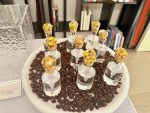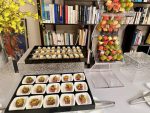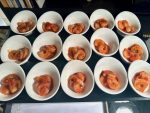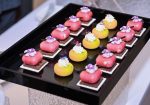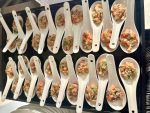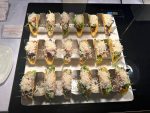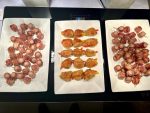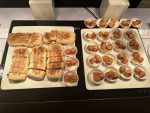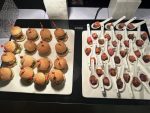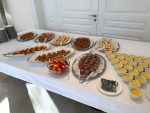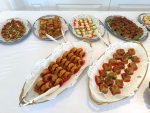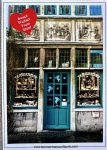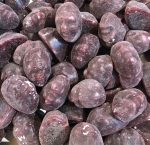UGent
In two days our Belgian embassy hosted UGent and Sinterklaas events.
On 1 December 2023 we had the reception of CPAF 2023, the Closing Ceremony to celebrate the 3rd China Partners Academic Forum by Ghent University in the Residence of Belgian Ambassador.
Moderator was Chi Zhang, Representative of Ghent University.
H.E. Mr. Bruno Angelet, Ambassador of Belgium gave the Opening Speech.
Other speeches by Mr. Baoyi Yu, Representative of Beijing Alumni Chapter and by executive members of Beijing Alumni Chapter, Mr. Gilbert Van Kerckhove (that’s me), Prof. Jun Zhang (Tsinghua University) and Prof. Mingmei Yu (University of Chinese Academy of Social sciences).
After the group picture there was networking with walking dinner and Belgian beer. Catering was by a specialized Chinese company, nicely done.
I had to leave a bit early as I was expected at the German Christmas Charity Bazaar…
Sinterklaas
On the afternoon of 2 December Sinterklaas (Saint Nicholas) and his helpers visited the residence of the Belgian ambassador to meet with many Belgian children. Sinterklaas called one by one the children to comment on their recent behavior and give a present. None of the children was hurt. For privacy reasons no closeups of the children.
Snacks provided by Morel’s Restaurant, drinks by the embassy and Morel’s, sweets by the embassy.
I was on duty to serve the drinks (as usual).
See here the official article by the embassy: A Joyful Weekend with Saint-Nicholas.
Cuberdons – neuzekes
One of the sweets provide by the embassy were the famous cuberdons from Ghent.
A cuberdon is a cone-shaped Belgian candy and a popular local delicacy in Ghent. In Dutch it is also known as a neus (“nose”), Gentse neus (“Ghent nose”), or neuzeke (“little nose”) for its likeness to a human nose. In French, cuberdons are also called chapeau-de-curé and chapeau-de-prêtre (priest’s hat).
- cuberdons
- Temmerman shop
- Temmerman cuberdons
- Ghent street sales
- Geldhof cuberdons
Cuberdons are traditionally made with gum arabic candy crust with a soft, raspberry-flavored filling. Their color is mostly purple.
The outside is relatively hard, whereas the inside is gelatinous.
There are two hypotheses about its origins:
- A clergy member living in the city of Bruges created it — which might explain other names in use for the cuberdon such as “cleric’s cap” (bonnet de curé) and “young nun’s belly-button”
- In 1873, pharmacist De Vynck in the city of Ghent discovered the recipe of the cuberdon by chance. In order to increase the shelf life of drugs at the time, many were packaged in the form of syrup. When the pharmacist examined a failed preparation after a few days, he found that it had formed a crust, while the core was still liquid. From this discovery came the idea to use such a technique to manufacture candy.
Source: Wikipedia
Other post about the Cuberdon of Gentse neus, see here.
While the origin 2 above seems to be the overall winner, TEMMERMAN, a household name since 1904 has a different view of the shape.
Temmerman has a rich tradition spanning over a century. The first store in Ghent opened in 1904 and since then, has become known as the grandmother of sweet shops. Today, the fifth Temmerman generation continues the legacy with a passion for confectionery, gingerbread, chocolate, and tea.
Their cuberdons have a different shape, with a face. They claim it is the “original cuberdon shape”. But generally the shape is said to be cone-shaped.
Other sweet shop I had the chance to taste is Geldhof. They simply claim “De énige échte neuzekes – Sinds 1954 – Onbetwiste marktleider – Vlaams streekproduct”.
Never mind the sweet polemic, let’s simply enjoy!















